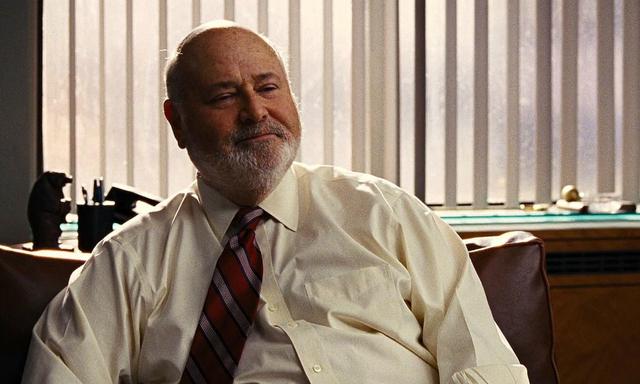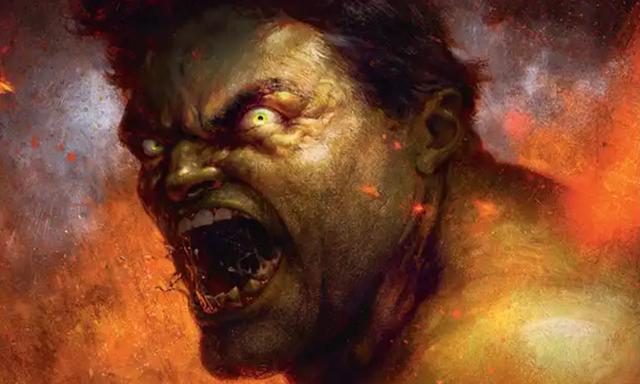If you click on a link and make a purchase we may receive a small commission. Read our editorial policy.
The hierarchy of power in the DC universe has just changed in DC's Black Adam finale.
As the Black Adam maxi-series comes to an end, Christopher Priest shares the themes behind the story

Across 12 issues, Christopher Priest, along with artists Rafa Sandoval and Eddy Barrows, provide a bold future for Black Adam, examining the purported antihero’s place in the wider DC Universe. Right from the opening issue of the maxi-series, the creative team reconnects Adam with his human roots as Theo Teth-Adam, the man who can transform into a superhuman with the powers of the gods with the utterance of a single word. However, with his powers giving him immortality for millennia, Adam finds himself in the midst of an existential crisis throughout the story, spurred by a sudden brush with mortality.
In the series’ electrifying final issue, Adam willingly gives up his powers as Black Adam, separating himself from his magical persona seemingly for good. As Adam contemplates his newfound life as a mortal, Black Adam’s new protege Malik White, who inherited some of Adam’s powers to become the superhuman Bolt, stands in his place. By the end, the hierarchy of power in the DCU has definitely been altered, with Black Adam himself no longer anywhere close to the top.
Here’s how the creative team redefined Black Adam’s place in the DCU along with the relationship between Theo Adam and Black Adam, what the wider implications are following the finale, and Priest’s own commentary on the maxi-series, with the full exclusive interview with him running later, only on Popverse.
Spoilers ahead for June 20's Black Adam #12.
Black Adam no more

The most impactful and visible consequence spinning out of the Black Adam maxi-series is that Theo Adam has his connection to Black Adam severed. After Adam is magically controlled by a host of villainous gods known as the Akkad, Malik uses an ancient Egyptian artifact to physically separate Theo and Black Adam into two physical entities. Black Adam moves to instruct the wayward Akkad how to properly conduct themselves as gods but Theo has no interest in reuniting with Black Adam into a single body, opting to go his own way as a mortal instead.
Even before the introduction of the Akkad, Priest presents Adam as a haunted man whose immortality has since become something of a burden. Filled with regret over the things he’s done, a refrain for the protagonist is that he is not someone pursuing redemption, in contrast to prior portrayals of the character seeking atonement for a lifetime of wickedness. For Priest, this drive for Adam serves as the wider theme for the overarching story.
“There is no redemption for Black Adam, that was a note I wrote for myself and became a running theme,” Priest explains. “It became this thing that haunted him and he knew it, he’d say it out loud and give it voice to it, ‘There is no redemption for Black Adam.’”
In the series’ final pages, Theo Adam is mugged while walking the streets by common criminals unaware of his magical alter ego. Theo attempts to transform into Black Adam but finds himself unable to, leaving him at the mercy of his assailants. Rather than being afraid by the loss of his powers, Theo is overjoyed, finally free of the emotional and mental burden that comes with being Black Adam.
A new magical champion

Though Theo Adam doesn’t have access to his powers anymore, his successor Malik White does. An unassuming medical student who is given Adam’s powers during a chance encounter when Adam is stricken with a mysterious illness, Malik is initially given the name White Adam to reflect the white variation of the Black Adam costume whenever he transforms. Malik is revealed to be a distant descendant of Teth-Adam and, to distance himself from Black Adam’s dark legacy, takes on the superhero moniker Bolt and fills the magical void left by his depowered ancestor.
Priest creates Malik, both as a successor to Black Adam free of the villainous baggage associated with the character, and as a source of comedic relief to comment on how ridiculous the proceedings truly are. And with Adam being such a closed-off character in how he outwardly shows his emotions, including his deep sense of loneliness in the series, Priest provides Adam with someone to bounce his deeper and more vulnerable thoughts off of rather than having to spell them out on the page.
“He was there to be the light to this guy’s darkness,” Priest observes about the inclusion of Malik in the story. “Malik was there to bring out these parts of Black Adam because I don’t see Black Adam being that open and honest and talking about his feelings.”
By the story’s end, Malik remains the inheritor of Theo Adam’s powers, watching his ancestor impassively to ensure he truly gave up his connection to Black Adam. Bolt hasn’t demonstrated any of the villainy that Black Adam was capable of, suggesting that if there is any redemption coming for the Black Adam legacy, it’ll be from the antihero’s descendant rather than from Adam himself as the DCU’s latest magical champion.
The rise of the Akkad

Certainly not just a soul-searching story, the creative team escalates the superhero stakes by introducing the Akkad, a pantheon of gods drawn from Sumerian and Mesopotamian theologies. Malik’s acquisition of Black Adam’s powers puts him on the Akkad’s radar, with the pantheon emerging to confront him and Adam. Anu is the progenitor of the Akkad, with his son Ashur recognized as its leader. They are joined by Ashur’s brothers Nergal and Enki, Ashur’s wife Belit, Ashur and Belit’s daughter Ninurta, and Ashur’s personal counselor Marduk.
Battling Adam and Malik over the course of the 12 issues, the Akkad ties the Black Adam mythos closer to actual Middle Eastern culture rather than the fictional country of Kahndaq where Adam rules. The Akkad is still active by the series’ conclusion, with Black Adam intent on destroying them once and for all but the newly separated Theo convinces him that the pantheon needs his guidance and wisdom instead. This adds a new pantheon to the DCU, in a refreshing change from the European pantheons that usually dominate the universe’s depiction of mythological gods.
The consequences of Theo Adam’s selfish change

Though Theo is free of Black Adam, the move is an enormously self-centered one and one that can come with its own set of devastating implications for the wider DCU beyond the events of the series. While in confession with a priest after separating himself from Black Adam, it is pointed out that, with Black Adam still active, the magical figure no longer has a living tether to humanity. This development runs the risk of making Black Adam even deadlier than before – Future State: Shazam! saw even the mighty and noble Shazam grow dangerous without being grounded to Billy Batson – but Theo doesn’t appear concerned by this change in the slightest.
When immediately separated from Theo, Black Adam’s first thought was to destroy the Akkad, personifying the darker and more violent side of Theo’s personality. In the 2006 weekly series 52, Black Adam was depicted as being strong and merciless enough to take on the entire DCU superhero community by himself, with an entire Middle Eastern country lost in the crossfire. With Theo no longer having at least one hand on the driver’s wheel, Black Adam is flying solo and, given his brutal tendencies, this should make him the DCU’s most destructive liability on the loose.
However, for all its battles between deities and demigods and the immortal facing their own imminent mortality, the Black Adam maxi-series is really about finding man at the heart of a god. Teth-Adam threw away all he had in exchange to gain the powers of Shazam for himself and seize control of Kahndaq. Not a quest for redemption, the story is about that conflicted and lonely man trying to rediscover who he is under the black costume and magical lightning.
“He’s a guy who sold out his own humanity,” Priest explains succinctly. “The whole point of the series, if you want to put a button on what the whole series is about, is that this is about how this guy got his humanity back.”
Black Adam is written by Christopher Priest, penciled by Rafa Sandoval and Eddy Barrows, inked by Sandoval and Eber Ferreira, colored by Matt Herms, and lettered by Willie Schubert. The first collected volume is on sale now, with the second volume on sale Dec. 26 and currently available for preorder.
Follow Popverse for upcoming event coverage and news
Find out how we conduct our review by reading our review policy
Let Popverse be your tour guide through the wilderness of pop culture
Sign in and let us help you find your new favorite thing.
















Comments
Want to join the discussion? Please activate your account first.
Visit Reedpop ID if you need to resend the confirmation email.